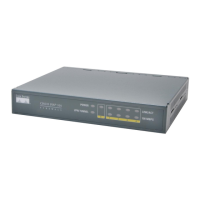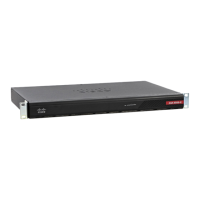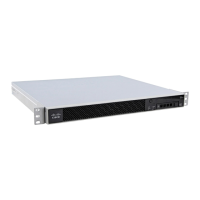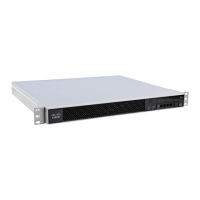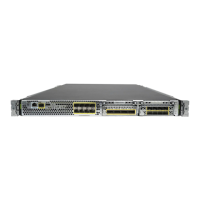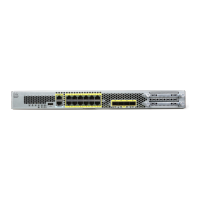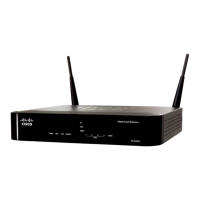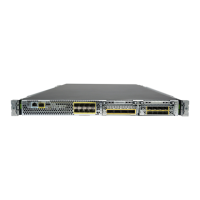4-9
Firepower 7000 and 8000 Series Installation Guide
Chapter 4 Installing a Firepower Managed Device
Identifying the Sensing Interfaces
• a quad-port 1000BASE-SX fiber interface without bypass capability. See Figure 4-18Quad-Port
1000BASE-SX Fiber Non-Bypass NetMod, page 4-12 for more information.
• a quad-port 10GBASE (MMSR or SMLR) fiber interface without bypass capability. See
Figure 4-19Quad-Port 10GBASE (MMSR or SMLR) Fiber Non-Bypass NetMod, page 4-12 for
more information.
A stacking module is optional on the Firepower 8140, 8250, and 8350; and is provided in the Firepower
8260, 8270, 8290 and the Firepower 8360, 8370, 8390 stacked configurations. See Firepower
8000 Series Stacking Module, page 4-12 for more information.
Figure 4-12 Quad-Port 1000BASE-T Copper Configurable Bypass NetMod
You can use these connections to passively monitor up to four separate network segments. You also can
use paired interfaces in inline or inline with bypass mode, which allows you to deploy the device as an
intrusion prevention system on up to two networks.
If you want to take advantage of the device’s automatic bypass capability, you must connect either the
two interfaces on the left or the two interfaces on the right to a network segment. This allows traffic to
flow even if the device fails or loses power. You must also use the web interface to configure a pair of
interfaces as an inline set and enable bypass mode on the inline set.
Figure 4-13 Quad-Port 1000BASE-SX Fiber Configurable Bypass NetMod
The quad-port 1000BASE-SX fiber configurable bypass configuration uses LC-type (Local Connector)
optical transceivers.
You can use this configuration to passively monitor up to four separate network segments. You also can
use paired interfaces in inline or inline with bypass mode, which allows you to deploy the managed
device as an intrusion prevention system on up to two separate networks.
Tip For best performance, use the interface sets consecutively. If you skip interfaces, you may experience
degraded performance.

